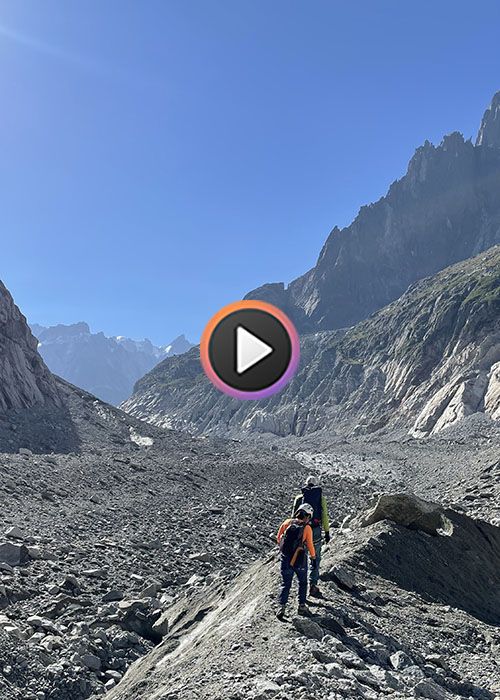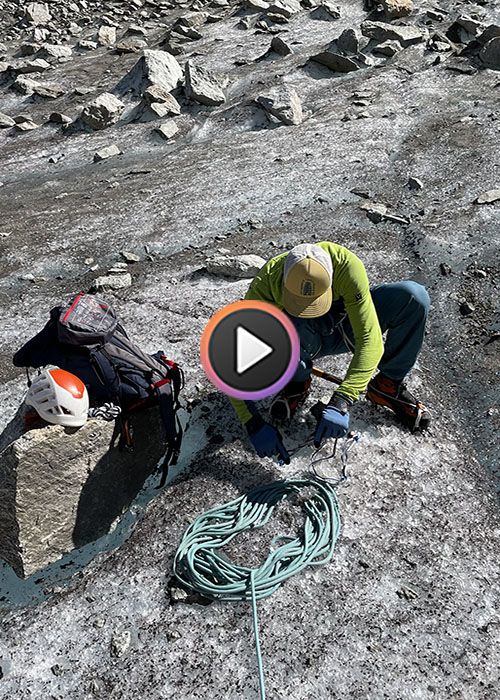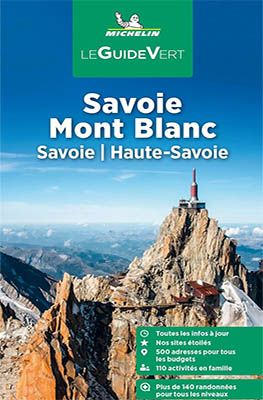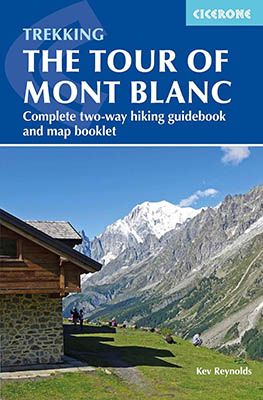The Mer de Glace (‘Sea of Ice’) is one of the most impressive glaciers in the Alps. Located in the Mont Blanc massif, the glacier offers spectacular views. During the summer months, Mer de Glace is snow-free and you then have the unique opportunity to discover a surreal landscape of glacial ice, ice caves, glacial crevasses and ice lakes. We preceded you in this last summer. Accompanied by a guide, we went on a relaxing but unforgettable trip through breathtakingly beautiful landscape. In this blog, we tell you what to expect from a glacier hike on Mer de Glace. We conclude with some practical tips.
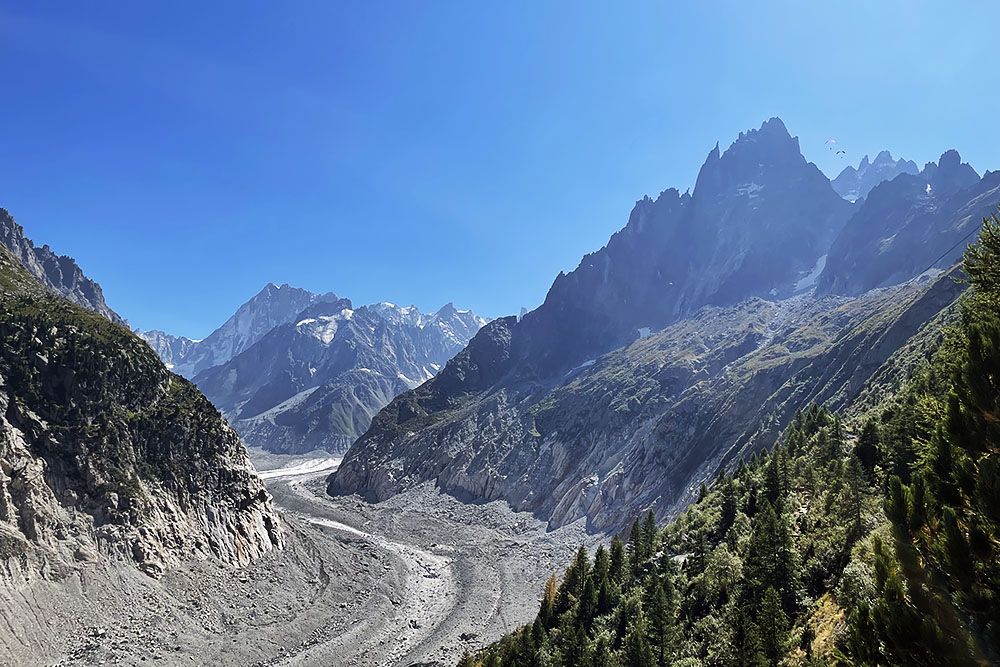
Mer de Glace: icy giant in Savoie Mont Blanc
At around seven kilometres long, Mer de Glace is the largest glacier in France. For many decades, the glacier has attracted countless visitors thanks to its sheer beauty and enormous size. Formed by the forces of nature thousands of years ago, this natural wonder has left behind an enchanting landscape of ice and rock.
Flora and fauna
Mer de Glace is not only a frozen plain, but also a habitat for various wildlife and flora. Keep your eyes peeled for graceful chamois and playful marmots. You might even spot an ibex on rocky precipices! During the summer months, the alpine meadows come alive with wildflowers, including edelweiss and gentian. They form a picturesque contrast against the icy background.
Influence of climate change on Mer de Glace
Mer de Glace is not only a feast for the eyes, but also of great historical and ecological interest. On a guided walk, you will learn more about the formation of the glacier from the guide. And about the glacier’s role in shaping the surrounding landscape over thousands of years.
Unfortunately, the effects of climate change have not spared this majestic glacier. Information boards along the path from Montenvers to the glacier provide insight into the glacier’s retreat over the years. They highlight the importance of preserving these wonders of nature for future generations.
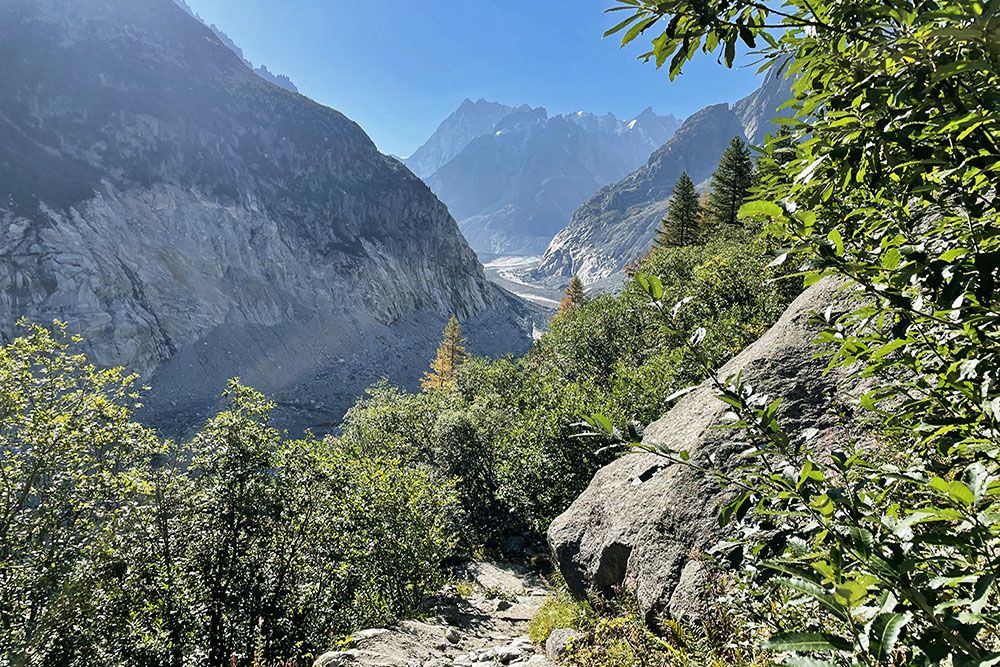
Our walk on Mer de Glace
It is still early and quite chilly when we meet Damien Marchini, our guide, just after breakfast. We quickly stock up on provisions at the little shop next to the train station, grease up and are ready to go. As we descend the trail to the glacier, Damien updates us on the retreating glacier. The information boards along the trail are downright alarming. The signs are placed at the same height to which the glacier reached at the time. Each of the signs shows the year the sign was placed. We did know beforehand that the glacier falls considerably every year. Yet the sheer speed at which this happens amazes us. It reminds us again that we desperately need to protect our fragile nature…
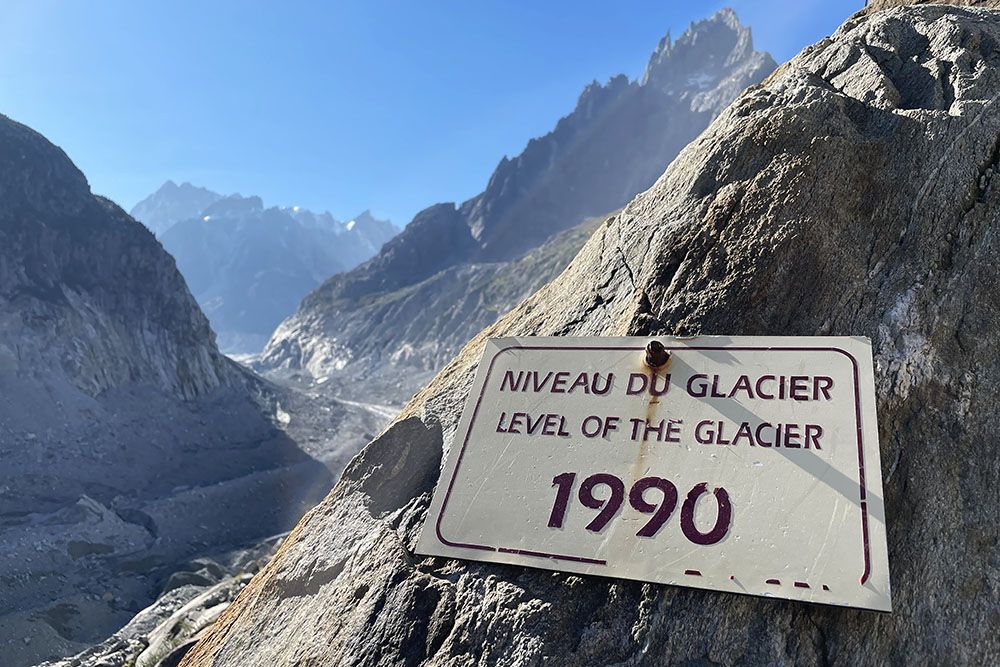
Mountaineering crash course
Arriving at the glacier, our guide gives us a kind of mini-course in mountaineering for beginners. So, we learn how to put on and adjust the climbing harness and how to attach the crampons under our special shoes. Then we are given instructions on how to walk. Namely, to avoid tripping, the shoes should not be too close together. This may sound tough, but it’s not so bad in practice!
And then it’s time: we start the glacier walk. What immediately strikes us is how much grip we have on the slippery ground. Walking across the icy giant is a lot easier than we imagined beforehand. Having mastered walking with the crampons fairly quickly, we are increasingly aware of the world around us. Thankfully, since that’s what we were after. We feel tiny because of this impressive glacier and the towering mountain peaks around us. What an incredibly beautiful landscape!
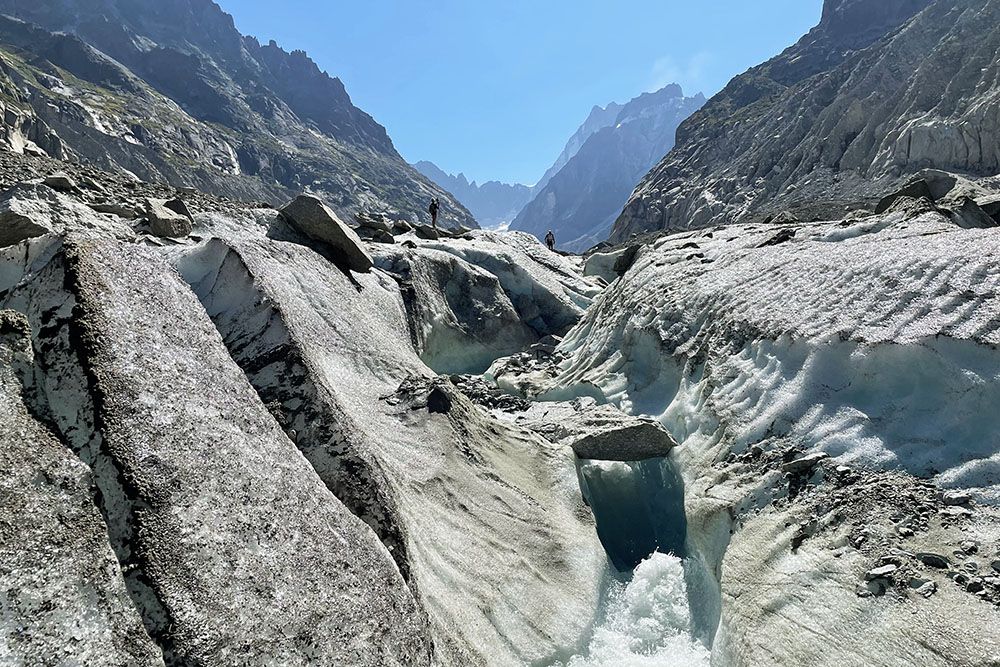
Ready for the real scrambling
Damien takes us further past deep gullies and meltwater pools. Beneath the ice, he tells us, are fast-flowing streams. In some places, the ice ceiling above a stream collapses, creating a basin. Those basins look beautiful from above but are life-threatening. Staying at a safe distance from the edge is therefore the motto.
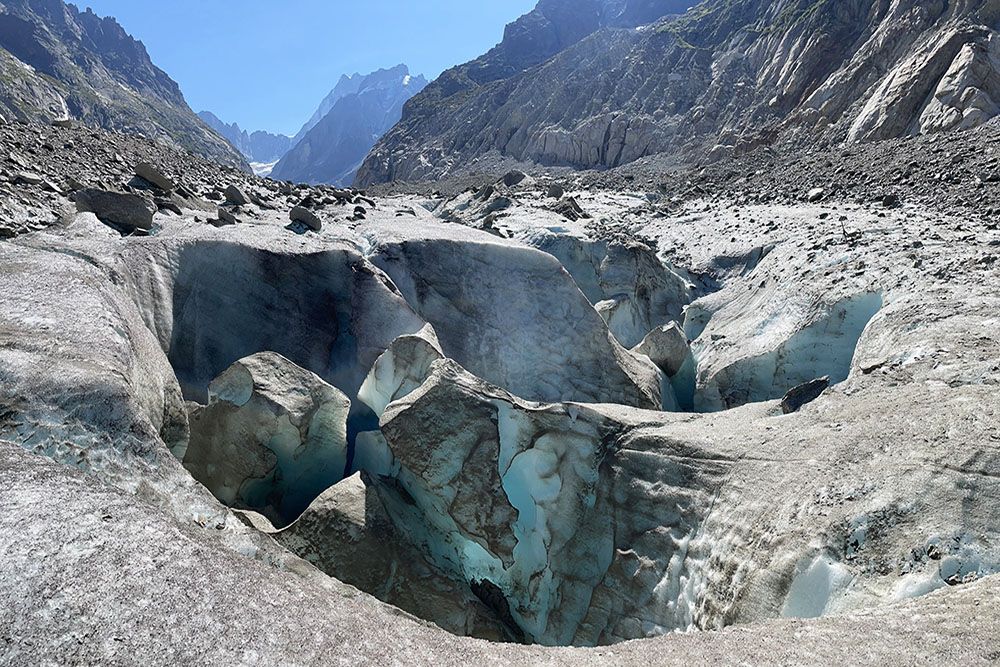
We stop at a stream that flows a bit more to the surface. Our guide finds this an appropriate place for us to learn new skills. With his ice axe, he makes two shallow holes in the ice. In both holes he screws an awl to which he attaches a thick piece of rope. He attaches the other end of the rope to his climbing harness. He then walks down the particularly steep ice hill as if the hill were just a gently sloping alpine meadow. With the ice axe in hand, he then climbs back up the ice wall. So that’s how you do it.
Now it’s our turn. We have to press the tip of the shoe with climbing iron into the ice first. This feels unnatural for the first metre of the descent. Fortunately, the rope attached to our climbing harness provides the necessary support. After that first metre, by the way, it goes much easier. Not as easy as Damien’s, but good enough to descend to the stream without fear. Apparently, we had to cross the figurative and literal threshold first. Going up the hill is even easier. With the the ice axe in our right hand, we clamber up the wall fairly smoothly. Damien can be proud of his students.
Cave in the glacier
Somewhere on a large boulder in the middle of the glacier, we have our lunch. Then, unfortunately, it is already time for the return trip. How time has flown by! At the end of the glacier, we get rid of our climbing irons and climbing harness. After this, we follow Damien into a real ice cave. This icy cavity – the “Grotte de Glace” – is carved deep into the glacier every summer season. The cave offers fascinating ice formations and sculptures resulting from years of glacial movements. It is like a trip to a totally different world, where we marvel at the crystal clear pale blue hues of the ice.
After our visit to the cave, it is still quite a hike up the mountain back to Montenvers. Once at the top, we say goodbye to Damien and thank him for an unforgettable experience. As far as we are concerned, the glacier hike we just completed definitely belongs on everyone’s bucket list. All the more so because it is perfectly doable by anyone with average hiking experience!
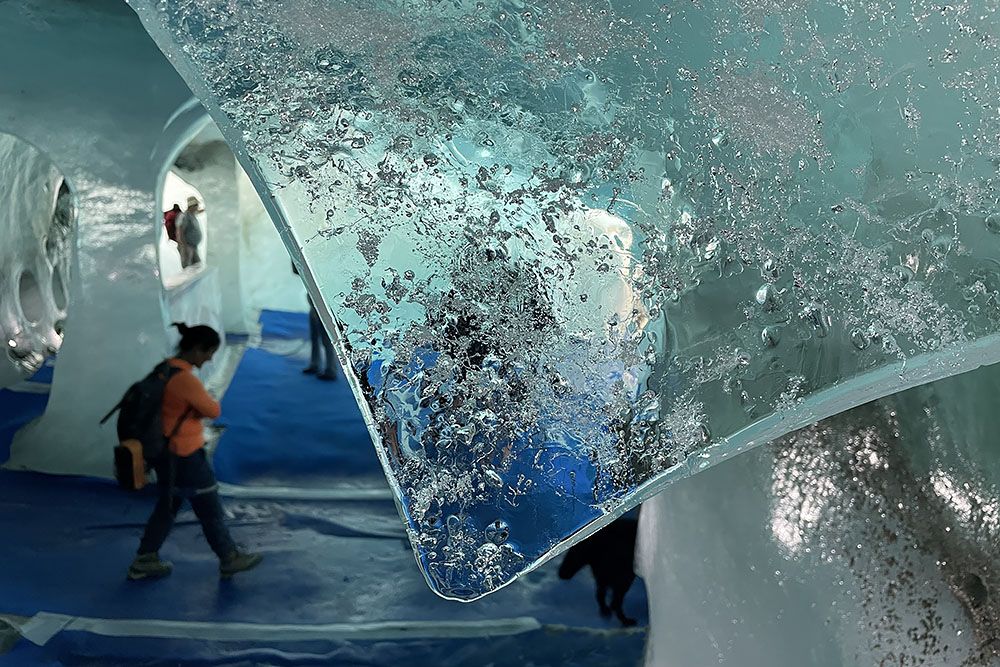
We went on this unforgettable glacier hike at the invitation of l’Agence Savoie Mont Blanc and the Tourism Office of Chamonix Mont-Blanc. We compiled the content of the blog independently and objectively based on our own impressions.
Practical tips for the glacier hike on Mer de Glace
Mer de Glace is located on the north side of Mont Blanc, near Chamonix in the French Alps.
The best season to hike the Mer de Glace is from June to September. The glacier must be snow-free to see any crevasses in the ice.
For the walk across Mer de Glace, you don't need to be in top shape. However, you do need some hiking experience. If you are going to follow the glacier to high altitude, you would be wise to acclimatise to the altitude. See also our blog on preventing altitude sickness.
In principle, this is allowed. You don't even need a permit for it. But hiking on a glacier can be extremely dangerous. Therefore, the urgent advice: never go on a glacier unless you have (a lot of) experience in ice climbing and ice hiking. Said experience also includes mastering all the techniques.
You can book a guide for your glacier hike (both for day trips and multi-day tours) through the official website of the Compagnie des Guides of Chamonix. The highly experienced guides usually speak good English.
To hike on a glacier, you need crampons and special shoes to match crampons. You will also need an ice axe, climbing harness and helmet. There are plenty of locations in Chamonix and the surrounding area where you can hire these pieces of equipment. We ourselves ended up at Snell Sports, a pleasant spacious shop with friendly English-speaking staff.
At Snell Sports, you can also rent Nordic walking poles. We did not use these poles during our walk across the glacier. But if you plan on doing any more hiking in the area, such poles would be nice for the descent!
Apart from equipment, you will definitely need the following for your hike across the glacier:
- Gaiters (also called gamaschen: loose protective pieces that you put over your shoes and trousers when wet) if your trousers require them. We did not use these ourselves
- Backpack 25/30 litres, or larger if you are going on a multi-day trek
Clothing adapted to hiking high in the mountains. Dress in layers, as the weather in the mountains can change quickly - A windbreaker
- Thin gloves
- Sun hat or cap
- Category 4 sunglasses (adapted to the sun at altitude)
- High-protection sunscreen
- At least 1.5 litres of water
- Snacks / granola bars / dried fruit, etc.
Chamonix is known as the French capital of mountaineering. Not surprisingly, you will find many mountain sports shops in the charming town. We ourselves hired our equipment from Snell Sports. This is a pleasant, spacious shop where they sell (and rent) so much more than just mountaineering equipment. The friendly English-speaking staff took all the time they needed for us.
The walk to the Mer de Glace starts in Montenvers. Here you have Refuge du Montenvers, a stunning old stone alpine hotel. We spent the night here prior to our glacier hike. Extremely comfortable with good cuisine and cosy sun terrace.
Want to make it a multi-day hut tour (with a guide!)? A bit higher up the mountains on either side of the glacier are other ‘refuges’:

